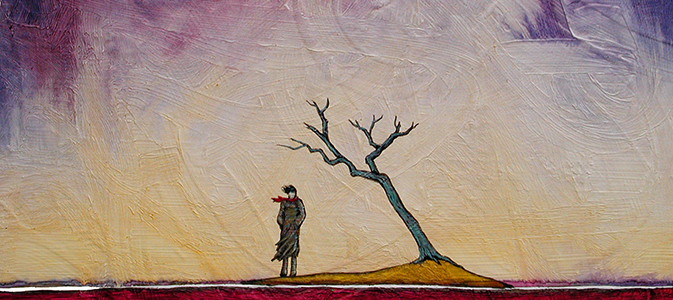How my pit bull helped me re-frame, increase my self-awareness and identify fear that was holding me back.
About two years ago I adopted a dog from a local rescue organization. I wound up with a 45 pound “mini” pit bull-type dog named Puma. All rescue dogs have a story and Puma’s story included being attacked by several dogs while in a foster home prior to being surrendered to the organization from which I got her. She still had the marks on her body from recently removed stiches the day I brought her home. According to the rescue organization, her original owner kept Puma isolated in his house and yard, and while she loved her people, she didn’t have very much experience with other animals nor was she socialized to other dogs. I was apprehensive about these facts and I was concerned about my ability to properly handle a powerful dog. All my worries of course melted away upon meeting Puma. She was sweet, very affectionate and conveyed that longing plaintive expression unique to homeless animals. She licked my face. I was hooked.
Aware of the stigma pit bulls carried, I quickly envisioned myself on a mission to make my pit bull a model for her breed. I was going to train her in obedience, she would earn the Good Canine Citizen certification, maybe even become a therapy dog so we could go about visiting senior centers and hospitals. I had it all figured out; within a few months I would heal the world with my amazing pit bull.
Right.
My little plan quickly dissipated once the reality set in that this strong little dog had never been trained to walk properly on a leash without pulling me behind her. Forty five pounds of pure muscle, a low center of gravity and over-the-top excitement at being outdoors, made Puma more bull-dozer than pit-bull. Did I mention that she is very strong?
In addition to the pulling, she would also lunge toward other dogs. Under any threat, a dog instantly assesses whether fight or flight is the best action. When a dog is on a leash, there is no option to fly and that’s why a lot of dogs have what’s known as leash aggression. This was understandable in Puma given her lack of doggie social skills and her experience of being attacked, but nerve wracking for me nonetheless. Additionally, the terrier in her wants to chase critters, a scampering squirrel could mean a sprained shoulder for me – did I mention how strong she is?
My anxiety was exasperated by the fact some people are afraid of Puma simply because she is a pit bull and I had to acknowledge what I now refer to as the liability of perception. No matter what behavior Puma exhibits, she’s already perceived as dangerous; she steps up to the plate with two strikes before the first pitch is thrown. I began to perceive my responsibility differently, I appreciated in a new way my notion of holding her to a higher standard. I had to make her into the perfect dog for her own safety.
I hired and excellent dog behaviorist and trainer named Dan Perata. www.danperatatraining.com. Among the many things I learned working with Dan, his recommendation to use a special collar that fits on a dog’s head represented the biggest improvement. The head collar (brand names are Walk-N-Train or Gentle Leader) functions a lot like a horse’s bridle. The idea is if a human can control a 2000 pound horse by controlling its head, I can do the same thing with my 45 pound dog.
The head collar worked great and with expert Dan’s help, and a number of consultations, I started to truly enjoy our daily walks. The head collar enabled me to control where Puma looked with a flick of my wrist. It was super easy to control her gaze and keep her from staring down other dogs, or prevent her from hunting squirrels and taking me down in a futile attempt to chase it up a tree. With the head collar, Puma trotted right by my side, looking straight ahead with a loose leash and pulling was virtually eliminated. The physical part of this was great but the best part was how much more relaxed and at ease I felt while out and about. My energy shifted from a state of intense vigilance to a more casual and care-free state, I was less tense.
The downside to the head collar was that Puma hated it. She tolerated it while we were in motion but the second we paused our walking, at a stop light or when I was scooping her poop, she would paw at her face, rub her nose and muzzle on the ground, or against the legs of anyone we would stop to talk with. Sometimes, if we were walking past a particularly fluffy patch of lawn, she would take a semi-sideways dive and make an embarrassing display of attempting to wriggle out of her head collar at the most inopportune moments. It got pretty annoying. On top of that, most people assumed that the head collar was a muzzle, further perpetuating the negative pit bull stereo type, about which I was already a bit defensive.
About a year passed using the head collar and Puma made deliberate progress with her leash walking skills. She pretty much stopped the lunging at other dogs unless they were behaving aggressively toward her and she completely ignored little dogs even if they were yapping and going nuts. Despite the progress, I found myself growing weary of the head collar, mostly because I knew Puma hated it and I hated her persistent protests whenever we weren’t in motion even more. I was also tired of judgmental looks from people who assumed my pit bull was vicious and therefore had to be muzzled.
How could I solve this problem? Did I really care that much what other people thought of me? On the other hand, I almost felt it was irresponsible of me to give up the control I had with the head collar and risk her getting into trouble; her proverbial strike three. Puma needed the head collar to behave properly and keep her out of trouble. She wasn’t ready to take the training wheels off. I told myself that even though Puma hated wearing it, she needed it.
She needed it.
The truth was that I needed it. The truth is that the head collar was a tool for me to feel more confident and secure. My ego was attached to all the stories I had created about my dog and how my dog would behave. I had all sorts of judgements around what it said about me (and others) to have a pit bull who wasn’t under my complete control and a model of obedience. Once I began to perceive the head collar as a tool for me and my piece of mind and my comfort and security rather than something Puma needed independent of me, things really shifted. It only took a few weeks to fully transition to a regular collar. Simply having the self-awareness that I was the one using training wheels, it naturally followed that I took the training wheels off for good.
One of the profound things I learned from Dan is how sensitive our dogs are to our energy and how they instinctively respond to our actual energetic state. We are often too much “in our head” to sense what going on with us energetically. As a coach, I’m trained to identify energetic states, so it was surprising that it took time to fully integrate that belief into my way of being with my dog. Puma was ready to take the training wheels off and transition to a regular collar long before I was. She was waiting for my confidence to catch up to hers before we could move forward together. Our animal companions give us so much more than we usually perceive. Puma gave me a beautiful insight to my own self-awareness.



